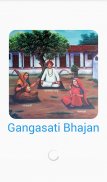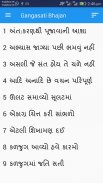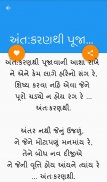







Gangasati Bhajan 50+

Gangasati Bhajan 50+介绍
According to traditional accounts, she was born in Vaghela Rajput family in Saurashtra region of present-day Gujarat state of India circa 12th to 14th century. She married Kahalsang or Kahalubha of Samadhiyala village in district Bhavnagar. He was a follower of nijiya tradition of Bhakti Movement. They had a son, Ajobha, who was married to Paanbai. The couple was religious and their home became center of devotion activities which was small to house number of sadhus and people visiting. They moved to farm and built hut where they continued their religious activities. According to traditional account, to prove his spiritual powers, Kalubha once resurrected a cow but later he regretted and decided to take Samadhi and end his life. Gangasati urged him to let her take Samadhi too but he refused and instructed her to wait until she had perfected Paanbai, her daughter-in-law, in path of devotion. She agreed and composed devotional songs, bhajans, one per day for fifty one days to teach Paanbai, the path of devotion. She took samadhi thereafter.
(Source: Wikipedia)
Features:
* Fully offline app
* Included all bhajan of Gangasati and Panbai
* Easy and Clean user interface
按照传统的帐户,她出生在Vaghela拉杰普特的家人在印度大约12日当今古吉拉特邦的索拉什特拉地区14世纪。她嫁给了在地区纳加尔Samadhiyala村Kahalsang或Kahalubha。他是奉爱运动的nijiya传统的追随者。他们有一个儿子,Ajobha,谁嫁给了Paanbai。这对夫妻的宗教和他们的家成为了这是小的房子圣人和群众来访数量奉献活动的中心。他们搬到农场,小屋建在那里他们继续他们的宗教活动。根据传统的帐户,以证明他的精神力量,Kalubha一次复活一头牛,但后来他感到遗憾,并决定采取三昧,并结束自己的生命。甘加萨蒂劝他让她拿三昧太多,但他拒绝了,并指示她要等到她已经完善Paanbai,她的女儿女婿,在奉献的路径。她同意和组成献身歌曲,bhajans,每天一个51天教Paanbai,奉献的路径。此后她花了三摩地。
(来源:维基百科)
特征:
*完全离线应用程序
*包括甘加萨蒂和Panbai的所有拜赞歌
*易于清洁和用户界面
























